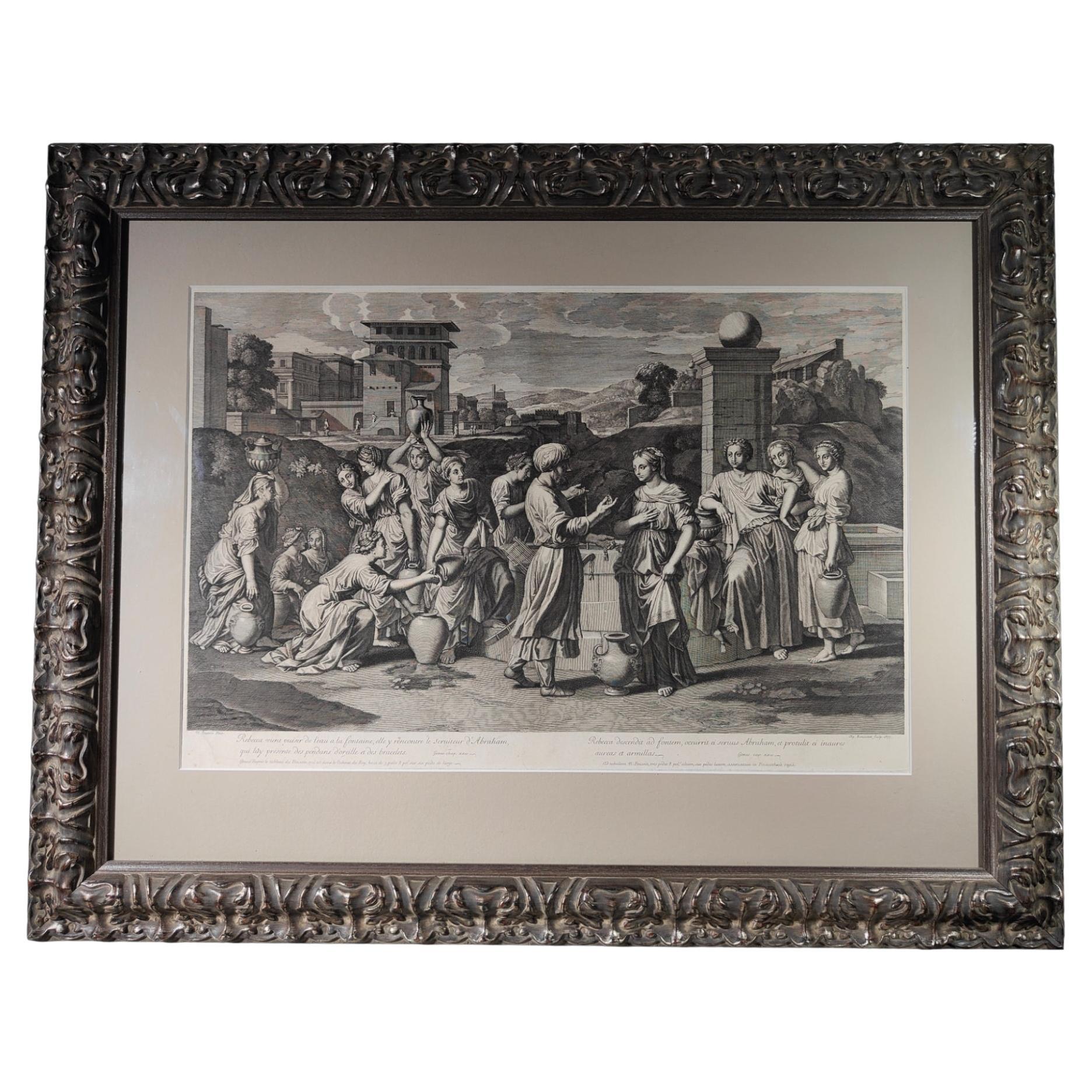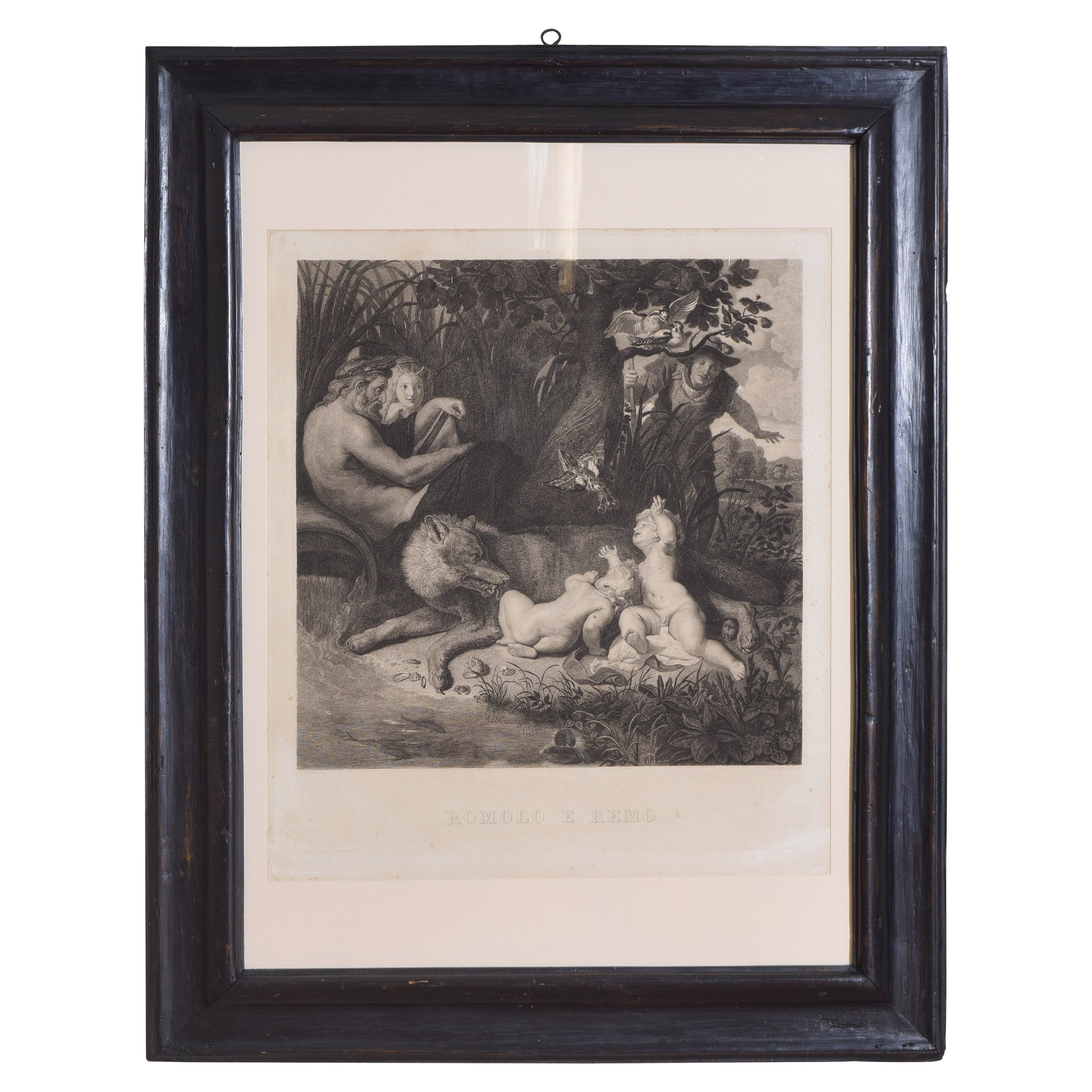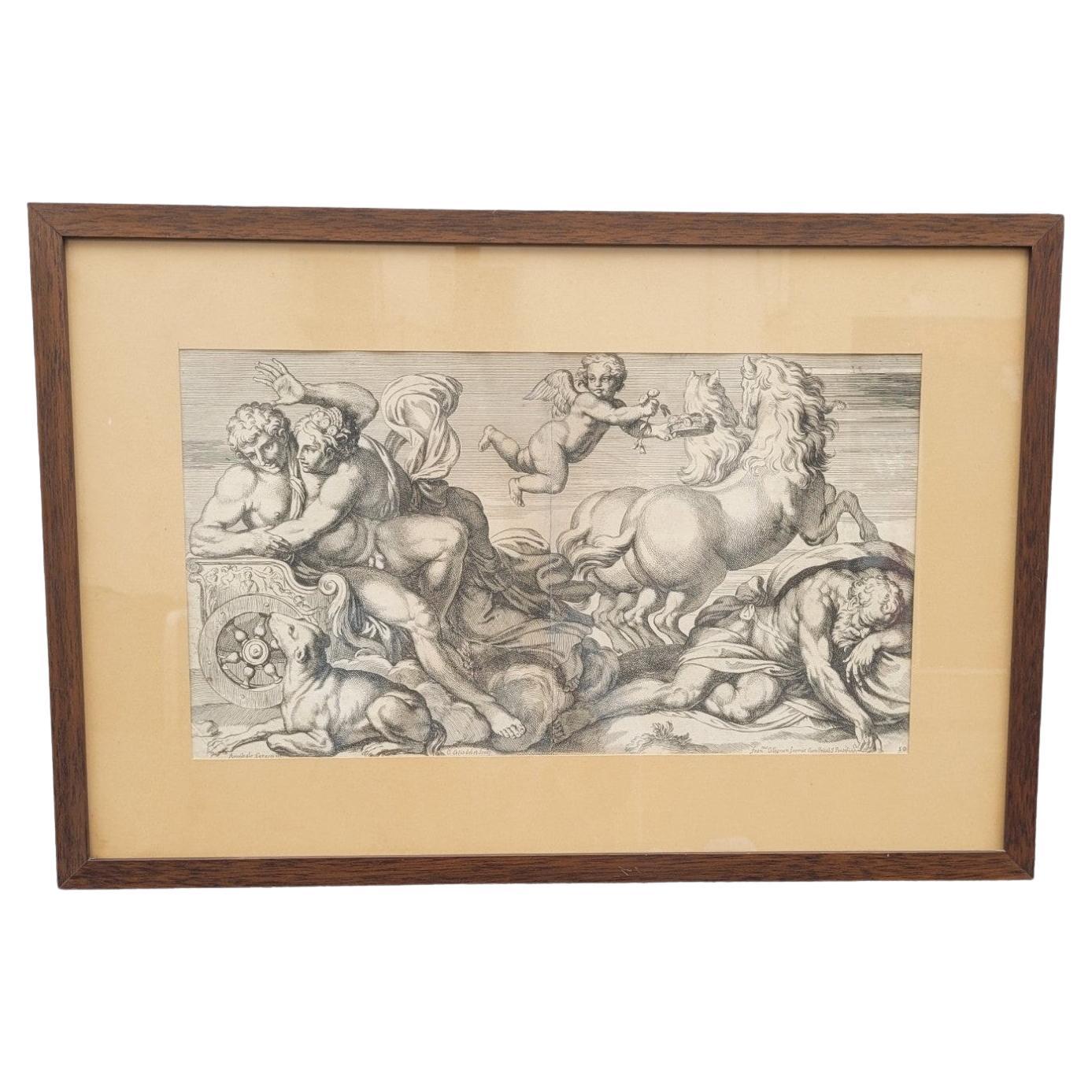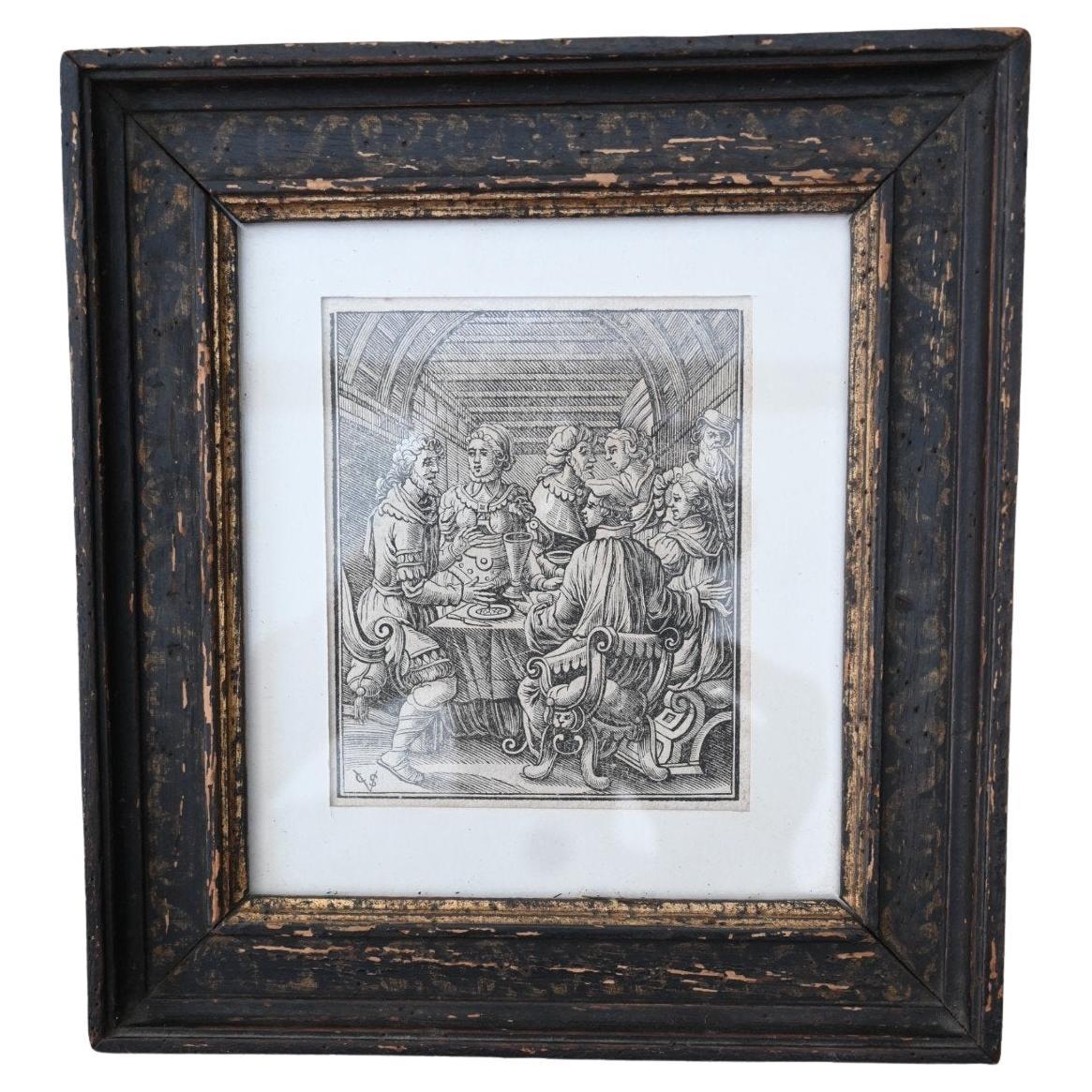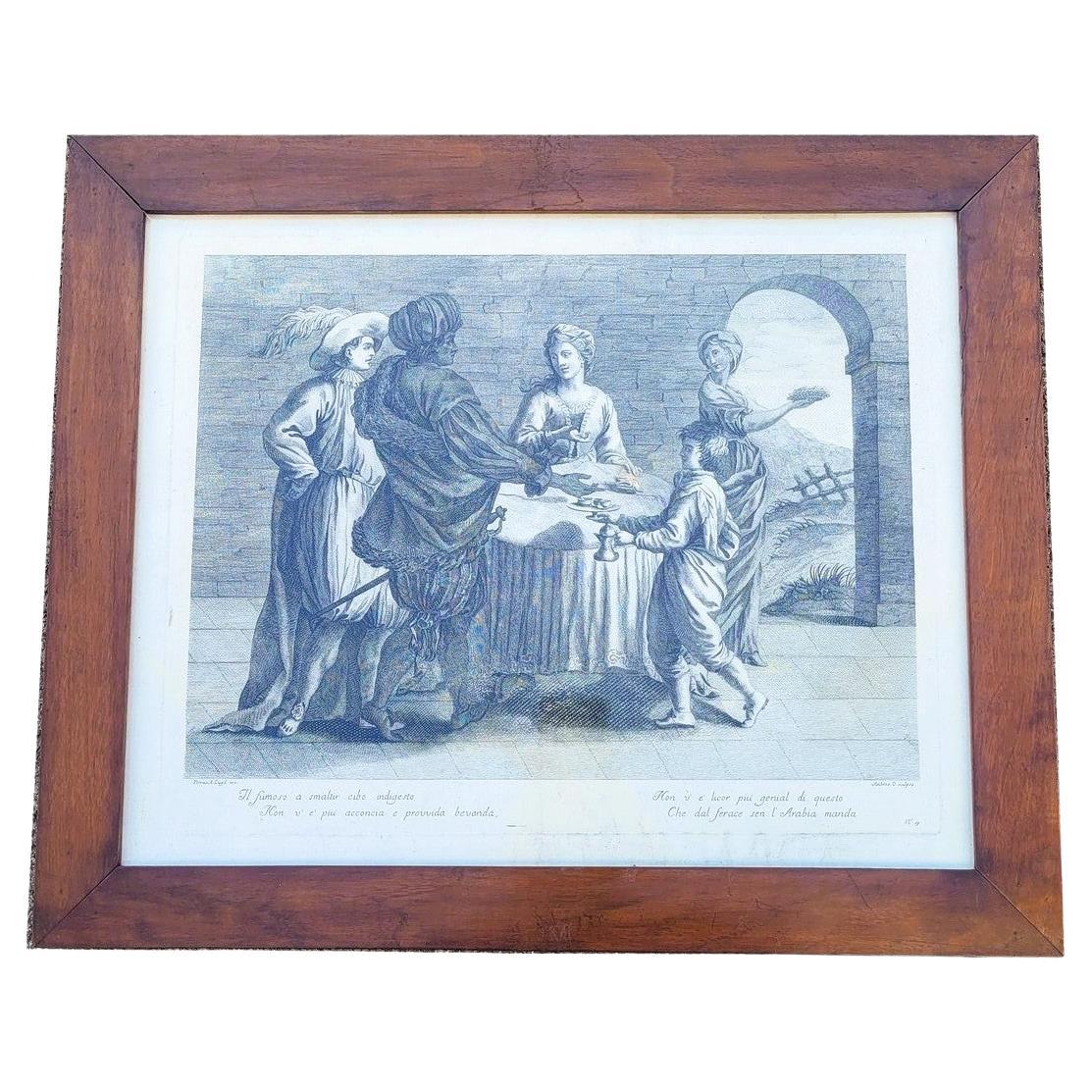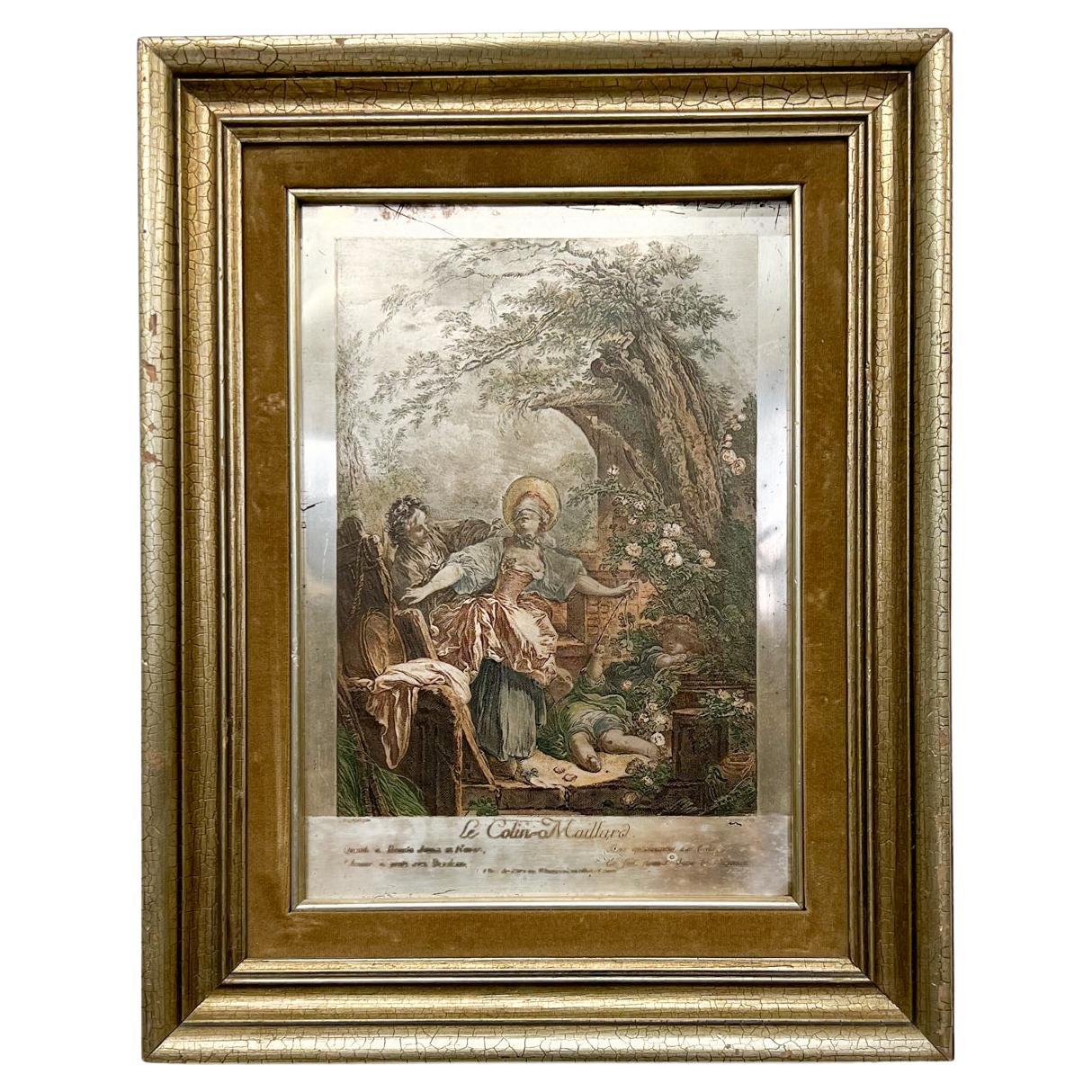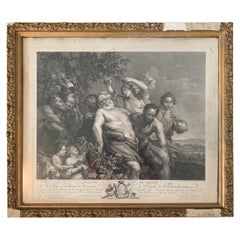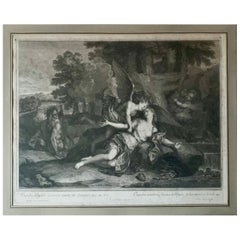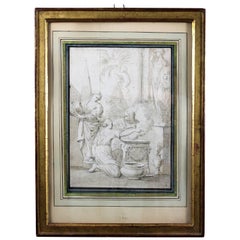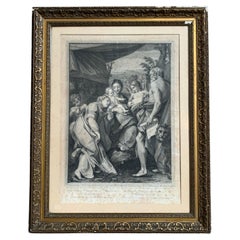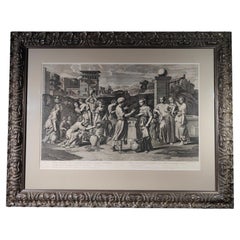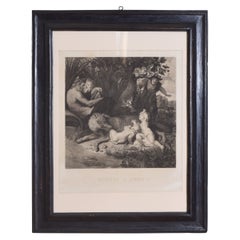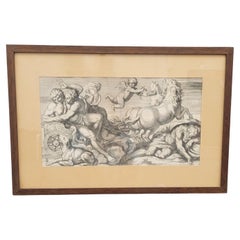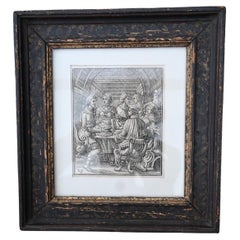Items Similar to LAUWERS 17th Etching Engraving Jupiter & Mercury & Zeus Hermes JORDAENS - Framed
Want more images or videos?
Request additional images or videos from the seller
1 of 15
LAUWERS 17th Etching Engraving Jupiter & Mercury & Zeus Hermes JORDAENS - Framed
$1,409.99
£1,076.24
€1,200
CA$1,988.46
A$2,184.67
CHF 1,141.72
MX$26,054.03
NOK 14,457.30
SEK 13,468.20
DKK 9,146.30
About the Item
Large and beautiful etching, engraving by Nicolaes Lauwers after Jacob Jordaens.
Flanders, 17th century.
Representing Zeus and Hermes (Jupiter and Mercury) in the house of Philemon and Baucis.
Very nice dimensions. Beautiful framing.
The hospitality and generosity of Philemon and Baucis towards Jupiter and Mercury earned them divine recognition.
Thanks to the work of the burin combined with that of etching, Lauwers manages not only to restore the plastic qualities of the original work but also to render the velvety chiaroscuro and the sharpness of the faces.
Very nice shadow work.
This work is a copy of an original painting now lost. However, some similar compositions have survived.
The story of Mercury and Jupiter in the house of Philemon and Baucis is told in Ovid's Metamorphoses (VIII, 620-724) and is a story of rewarded piety. Mercury and Jupiter, disguised as men, seek refuge as strangers and only receive it from an old couple Philemon and Baucis. As Jupiter wants to reward them, they only ask to be guardians of his temple and, when the time comes, to die together.
Jacob Jordaens (1593-1678), Flemish painter, who was trained in Antwerp by Adam van Noort and began his career as a waterschilder (painter of watercolors on canvas or paper, which served as substitutes for tapestries) but quickly moved towards oil painting. he was a prolific and successful painter, draftsman and upholsterer and became Antwerp's leading painter after the deaths of Rubens (1640) and Van Dyck (1641). He received important commissions from private and public institutions such as the Royal Court of The Hague and the Clergy.
Nicolaes Lauwers (Antwerp, 1600-1652) was a Flemish engraver.
He is known for his engravings after Peter Paul Rubens, Gerard Seghers and Jacob Jordaens. This engraving of Jupiter and Mercury with Philemon and Baucis is one of his most famous engravings.
- Similar to:Jacob Jordaens (Painter)
- Dimensions:Height: 27.37 in (69.5 cm)Width: 29.93 in (76 cm)Depth: 1.58 in (4 cm)
- Style:Louis XIV (Of the Period)
- Materials and Techniques:
- Place of Origin:
- Period:
- Date of Manufacture:17th
- Condition:Wear consistent with age and use.
- Seller Location:Beuzevillette, FR
- Reference Number:1stDibs: LU2663336025862
About the Seller
4.9
Gold Seller
Premium sellers maintaining a 4.3+ rating and 24-hour response times
Established in 2010
1stDibs seller since 2017
306 sales on 1stDibs
Typical response time: <1 hour
- ShippingRetrieving quote...Shipping from: Beuzevillette, France
- Return Policy
More From This Seller
View AllPierre Paul Rubens « Silène’s Walk », Engraving 18th Century
Located in Beuzevillette, FR
Beautiful engraving made by Nicolas de Launay after the work of Peter Paul Rubens.This engraving represents a bacchanalian scene featuring Silenus a mythological character.
In this...
Category
Antique 18th Century French Picture Frames
Materials
Paper
Antoine Coypel Engraving "Amor and Psyche" by Jean Audran, 18th Century
By Charles Coypel
Located in Beuzevillette, FR
This beautiful engraving of "Cupido and Psyche" by Jean Audran after a work by Antoine Coypel.
Inspired directly by Greek mythology. Psyche is a young ...
Category
Antique Early 18th Century French Louis XIV Prints
Materials
Paper
Ciro Ferri Drawing Offering Scene Italie 17th Century
Located in Beuzevillette, FR
Italian lead pencil drawing, entourage of Ciro Ferri, depicting an offering scene in front of a temple, in the manner of the antiquity.
Measurements: 7.8/5.9 inches
...
Category
Antique 17th Century Italian Drawings
Materials
Paper
A.A De Correggio Engraving of the Virgin and the Child
Located in Beuzevillette, FR
Beautiful engraving representing "The Virgin and Child with Saints Jerome and Maire-Madeliane", after an oil on canvas by Antonio Allegri of Correggio (1489-1534), master of the renaissance, engraved by Robert Strange...
Category
Antique Late 18th Century English Prints
Materials
Paper
Carle Van Loo " Spanish Conversation and Reading " Engraving 18th Century
Located in Beuzevillette, FR
Charming pair of engravings representing gallant scenes engraved by Jacques Firmin Beauvarlet after the works of Carle Van Loo. These two works are entit...
Category
Antique 18th Century French Picture Frames
Materials
Paper
David Teniers II, " La Boudinière ", Engraved, 18th Century
By David Teniers the Younger
Located in Beuzevillette, FR
This beautiful engraving named La boudinière, is made by Jacques Philippe LeBas after the work of David Teniers II. This engraving represents a kitchen interior divided by partitions. In the foreground, there is the carcass of a half pig hanging. This carcass is placed in front of a bread oven...
Category
Antique 18th Century French Picture Frames
Materials
Paper
You May Also Like
Old Engraving from the xvii Century: Nicolas Paussin, 1677
Located in Madrid, ES
Old engraving from the 17th century: Nicolas Paussin 1677
Large seventeenth century engraving dated 1677. With very decorative back frame total measures: 91x71 cm and only the engra...
Category
Antique 17th Century Drawings
Materials
Paper
Italian Large Engraving of Romulus & Remus, Ebonized Frame, 2nd Half 19th Cen
Located in Atlanta, GA
In Roman mythology, Romulus and Remus are twin brothers whose story tells of the events that led to the founding of the city of Rome and the Roman Kingdom by Romulus, following his f...
Category
Antique 19th Century Italian Prints
Materials
Paper
Aurora And Cephale, Framed Engraving, Carracci, 17th Century?
By Annibale Carracci
Located in MARSEILLE, FR
The framed engraving of "Aurore and Cephalus" depicts the kidnapping of Prince Cephalus by Aurore, who has fallen madly in love with him.
This work was created by Annibale Carracci ...
Category
Antique 17th Century Italian Baroque Prints
Materials
Paper
Christoffel Van Sichem Ii, Dutch (1577 - 1658), Woodcut, 1646, Framed
Located in Bilzen, BE
Christoffel Van Sichem II (1577 - 1658)
Title: Banquet scene with three young couples, an old man standing at right Series/Book
Title: Bibel Tresoor ofte der Zielen Lusthof, Amsterda...
Category
Antique 1640s Dutch Louis XIII Prints
Materials
Wood, Paper
Interior Scene, Framed Engraving, 19th Century
Located in MARSEILLE, FR
Framed engraving depicting an animated interior scene of several characters around a table.
It bears the following description: "Il fumoso a smaltir cibo indigesto - non v'e piu ...
Category
Antique 19th Century Italian Louis XIII Prints
Materials
Paper
French Art Silverplate: Le Colin-Maillard Etching Jacques Firmin Beauvar
Located in Chula Vista, CA
Vintage French Art Silverplate: Le Colin-Maillard Etching Jacques Firmin Beauvarlet
Artist: Jacques Firmin Beauvarlet (French, Abbeville 1731–1797)
Artist: After Jean Honoré Fragonar...
Category
Early 20th Century French Rococo Drawings
Materials
Silver Plate
More Ways To Browse
Hermes Print
Hermes Engraving
Bombay Style Furniture
Boot Scraper
Bronze Rhinoceros
Buffalo China
Burmese Buddha Head
Carpet Weight
Carrera Marble Dining
Carved Printing Block
Cast Bronze Buddha Head
Cast Iron Antique Bells
Cast Iron Horse Head
Castillo Silversmith
Castle Oak
Celadon Thailand
Cenedese Aquarium Murano
Ceramic Artichoke
